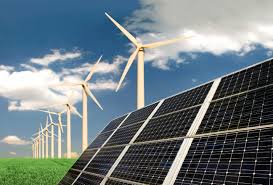Renewable Energies
The current global energy situation and, particularly, the European energy framework, requires the urgent development of alternative renewable energy sources to, as far as possible, reduce dependence on fossil fuels and external resources and ensure sustainability in its broader conception.
Since its foundation, CIRCE Institute has opted and dedicated a great deal of effort to the development of renewable energies that, although having experienced a remarkable development in recent years, still need to overcome numerous challenges. Some of those challenges are described below
Biomass
During the last decades, the use of wood and other types of biomass as fuel to generate electricity has become a renewed focus of great interest worldwide.
Biomass is a local, usually cheaper and, especially, renewable source of energy whose efficient exploitation requires:
- Evaluating the available resources and the whole exploitation chain
- Improving combustion and co-combustion processes
- Assessing and optimizing generation facilities
- Analyzing impacts associated to the ash's chemical composition
Solar Energy
Low temperature thermal solar panels for heating and solar water heating (SWH), as well as conventional photovoltaic (PV) solar panels, are quite mature technologies and can be considered commercial products. Thus, focus is mainly on the so-called “solar air conditioning” processes, which consist in producing air conditioning, based on absorption or adsorption cycles and using the heat captured by a solar panel. This technology would therefore allow the same solar panel to generate hot water, heating in winter and air conditioning in summer. Efforts are also being made to further develop the termal-photovoltaic (PVT) panels, that is, refrigerated PV panels that make it possible to take advantages of the recovered heat (for heating and/or SWH), besides increasing the overall PV panel performance thanks to the applied cooling.
Some other challenges that remains unsolved are related to high temperature solar thermal energy (STE), small facilities based Stirling engines and parabolic troughs and large hybrid solar-combined cycle power stations.
Integration of renewable energy sources in the electric system
Integration of renewable energies in the electric sector is delineated by two opposing trends. On the one hand, the need for a remarkable energy independence, which promotes its growth; and on the other hand, the technological barriers that limit the maximum percentage of this kind of systems in the electricity grid.
Currently, research and innovation is aimed at achieving a new scenario characterized by participation of a high number of low power generators placed near consumption places and connected to the electric grid. To this end, the following challenges need to be faced:
- The random nature of renewable energies difficult to ensure the required balance between electricity generation and consumption, which hinder its growth. Nevertheless, association of the generation processes with distributed storage systems and electric vehicles charging processes would allow greater incursion of the former and lower costs for the latter.
- Control and management of the electric grid must be updated in order to ensure the stability and the safety of the whole power generation system. Herein, communication systems, including the so-called concept of “Smartgrids”, are key to making the integration of distributed resources a reality.
- Displacement of conventional generation systems by these new ones requires auxiliary services, such as frequency and voltage control or reserves, can be provided also by distributed resources.
Most remarkable RENEWABLE ENERGY projects
1. "SHIP2FAIR. Solar Heat for Industrial Process towards Food and Agro Industries commitment in Renewables”
2. Funded entity: European Comission (H2020 Program)
3. Code: H2020-LCE-2016-2017
4. "BAoBaB. Blue Acid/Base Battery Storage and recovery of renewable electrical energy by reversible salt water dissociation”
5. Funded entity: European Comission (H2020 Program)
6. Code: H2020-LCE-2016-731187
7. “IRPWIND. Integrated Research Programme on Wind Energy”. 01/03/14 - 01/03/18
8. “MEAN4SG. Metrology Excellence Academic Network For Smart Grids”. 01/03/16 - 31/12/19
9. “Advanced Wind Energy Systems Operation and Maintenance Expertise AWESOME”. 01/01/15 - 31/12/18
10. “SWIP. New Innovative Solutions, Components and Tools for the Integration of Wind Energy in Urban and Peri-Urban Areas”. 01/10/13 - 31/05/17"
